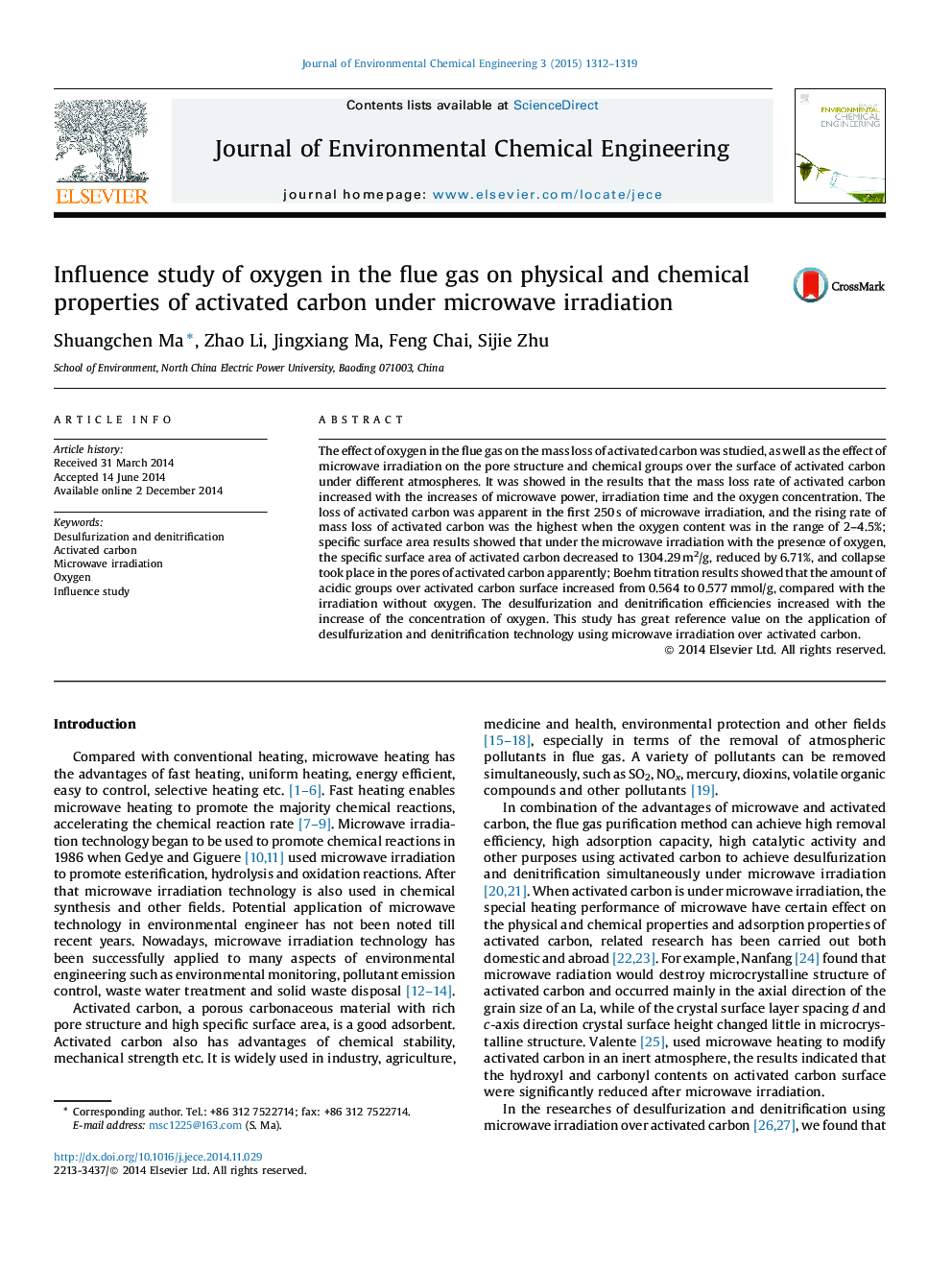| Article ID | Journal | Published Year | Pages | File Type |
|---|---|---|---|---|
| 222361 | Journal of Environmental Chemical Engineering | 2015 | 8 Pages |
•The mass loss of AC under microwave irradiation was studied.•The burning between oxygen and AC destroys the micropore structure of AC.•Activated oxygen atoms reduce the amount of basic groups on carbon surface.•SO2 and NO removal efficiencies improve with the increase of O2 content.
The effect of oxygen in the flue gas on the mass loss of activated carbon was studied, as well as the effect of microwave irradiation on the pore structure and chemical groups over the surface of activated carbon under different atmospheres. It was showed in the results that the mass loss rate of activated carbon increased with the increases of microwave power, irradiation time and the oxygen concentration. The loss of activated carbon was apparent in the first 250 s of microwave irradiation, and the rising rate of mass loss of activated carbon was the highest when the oxygen content was in the range of 2–4.5%; specific surface area results showed that under the microwave irradiation with the presence of oxygen, the specific surface area of activated carbon decreased to 1304.29 m2/g, reduced by 6.71%, and collapse took place in the pores of activated carbon apparently; Boehm titration results showed that the amount of acidic groups over activated carbon surface increased from 0.564 to 0.577 mmol/g, compared with the irradiation without oxygen. The desulfurization and denitrification efficiencies increased with the increase of the concentration of oxygen. This study has great reference value on the application of desulfurization and denitrification technology using microwave irradiation over activated carbon.
Graphical abstractFigure optionsDownload full-size imageDownload as PowerPoint slide
